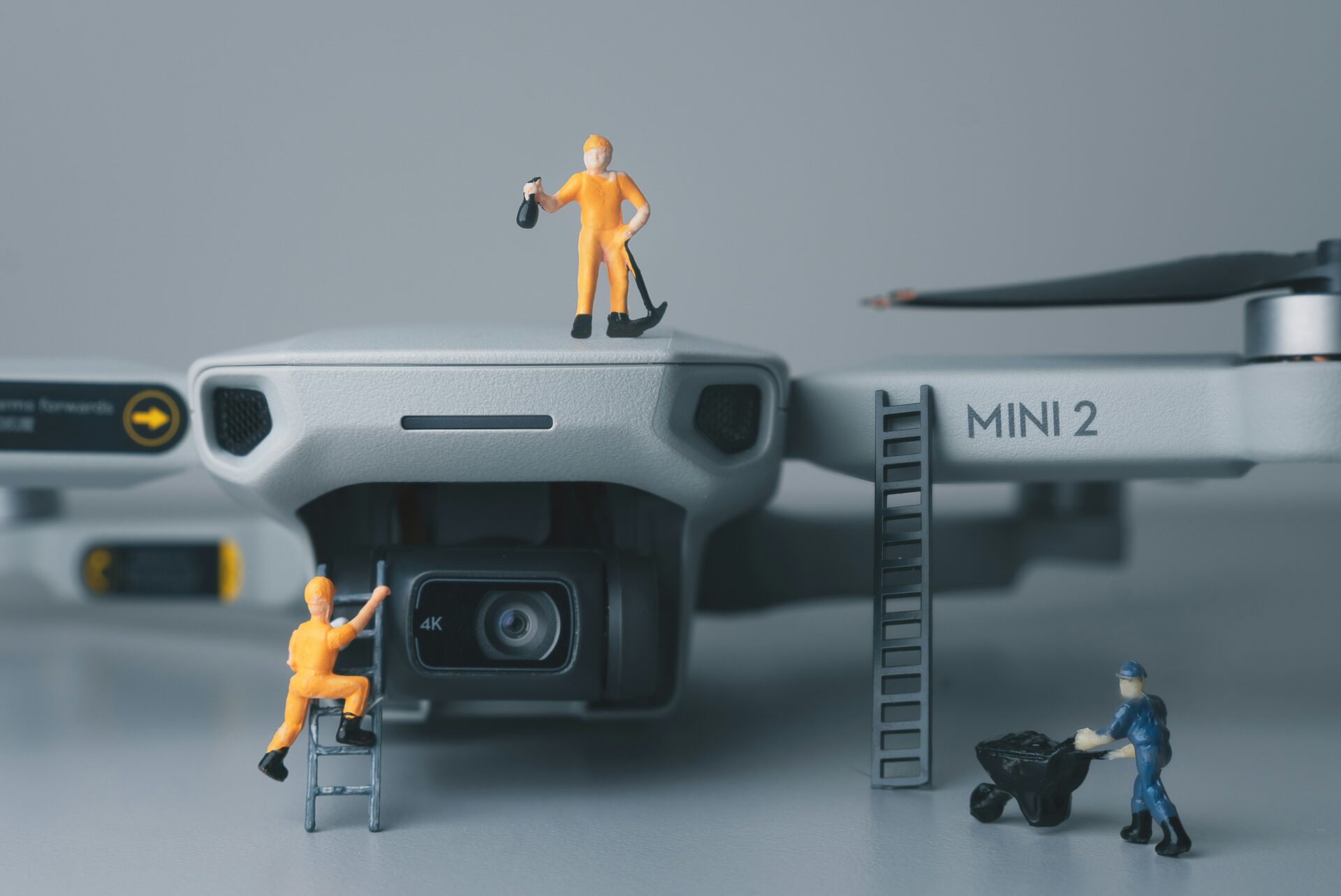Drone deliveries could be the next big thing if logistics companies find a way to overcome the current hurdles. How long will it take them to figure things out?
What Drone Delivery Could Look Like
So far, the commercial sector has shown interest in various short-range drone applications. Last-mile delivery is one of the most likely uses for drones in logistics since the technology is better suited for brief trips. While conventional vans can travel incredibly long distances, the cost of deploying them in the last leg of shipping is absurdly high.
Same-day delivery is another likely application because drones are small, fast, and lightweight. More importantly, they can typically only hold one package at a time, making them perfect for urgent order fulfillment.
The food and grocery delivery surge highlights another potential application for cost-effective drones. While app-based services are popular, companies lose money paying their drivers. For example, Uber only started making a profit in 2023 — it lost millions every year prior.
Pros of Using Drones for Package Deliveries
There are numerous benefits to using drones for package deliveries.
Fast Delivery
Autonomous drones could cut delivery times in half. They can deliver lightweight packages faster than conventional vehicles because they’re agile and small. A large fleet could easily make thousands of deliveries daily.
Inexpensive Operation
Semi-trucks and delivery vans use diesel or gas, which is expensive and fluctuates in price often. On the other hand, drones use electricity, which is relatively inexpensive. In other words, their cost per trip is typically much lower.
Higher Efficiency
Drones are fast and use little fuel because roadways, traffic lights, congestion, or car accidents don’t hinder them. Instead, they can fly in a semi-direct path toward their target address. They’re more efficient since they can achieve a higher delivery quota than trucks.
Increased Accessibility
Addresses in remote or congested areas can be challenging to get to by truck. Drones can travel to these spots with little trouble, increasing delivery accessibility — and potentially increasing order frequency.
Automatic Delivery
Autonomous drones pose less of a risk to public safety than self-driving vehicles. At the same time, they offer all of the benefits of automation — they can deliver packages around the clock, never have to take breaks, and won’t suffer from human-error-related mistakes.
Cons of Using Drones for Package Deliveries
As great as the benefits of drone deliveries are, downsides do exist.
Unreliable
Unfortunately, modern drones aren’t the most robust technology — a strong gust of wind or unpleasant weather can easily knock them off course. If conditions aren’t ideal, they won’t be able to leave the fulfillment center to make deliveries.
Complex
Currently, there are few out-of-the-box solutions for commercial drone delivery. Autonomous flight is very resource-intensive, requiring technology like cloud computing, artificial intelligence, computer vision, and GPS-independent navigation to work. Properly developing and integrating everything can be a highly complex undertaking.
Involved
Logistics companies can only deploy a fleet if they have storage space, chargers, navigation software, insurance, and maintenance. Developing the infrastructure to make drone deliveries is time-consuming and expensive.
Expensive
Commercial drones are expensive — on average, a single one costs $520 in 2024. Unfortunately, the price will only drop to $500 by 2028. Logistics companies will have to invest a significant portion of their budget into the upfront expenses alone.
Error-Prone
While conventional vehicles can experience a flat tire or a dead battery, the driver can fix it or call for assistance. If a drone suffers from a technical issue mid-air, it could land in a tree, on a roof or in the middle of a road, irreversibly damaging it and its package. Finding and retrieving it might be impossible if its geolocation features malfunction.
Restricted
Drones can only carry relatively lightweight packages. They’d have to be much larger to lift bulk or heavy objects — and who wants all that weight flying precariously above their head?
Preventable Challenges to Widespread Adoption
One of the most preventable challenges to the widespread adoption is drop-off uncertainty. Media often depicts drones gracefully swooping down and gingerly placing a package right where it needs to be. In reality, they need a pre-determined location like a parcel locker.
Unoperated drones aren’t capable of the precision that placing a package at the right doorstep requires, so pick-up locations are ideal. However, they have to get relatively low to the ground to make these deliveries, meaning there’s a high likelihood of interference.
While logistics companies can hope people remain civil, only some are fond of this novel delivery method. Residents of one town discussed shooting down Amazon’s drones after the tech giant rolled them out. Although they’d face repercussions from destroying or damaging anything, the ensuing legal battles and replacement costs could be high.
At the very least, general public hesitation is another challenge halting widespread adoption. According to one survey, nearly three in 10 people feel worried about potential drone accidents. Their concerns aren’t unfounded, either — drones are far more likely to crash than aircraft.
The issue of red tape is technically preventable but would be challenging in reality. The Federal Aviation Administration (FAA)’s Part 107 rule requires a line of sight between the pilot and their drone at all times. Australia and the United Kingdom have similar regulations. This technicality all but prevents autonomous deliveries.
Moreover, operators must get a remote pilot certificate, register, certify, and pass tests before ever being able to fly — or watch over — a drone. Even if they have all these credentials, they can’t fly above 400 feet or over congested areas. The regulations are strict.
While these challenges are all preventable with enough effort, money, and time, they still are massive obstacles to standardizing drone delivery. Unless a pioneering logistics company works to change things, they will remain in the way.
Unavoidable Challenges to Widespread Adoption
Logistics companies can’t remove every hurdle to adoption. Weather is one of the biggest obstacles — drones can’t fly in hail, fog, rain, sleet, or windy conditions. If it’s too hot out, their lifting capacity drops drastically, and their batteries drain much faster in the cold. Essentially, they are relatively useless unless it’s mild out.
Their range is another longstanding challenge. Currently, autonomous drones can only get so far — a few miles, to be precise. For logistics companies to make an adequate return on investment, they’d need to build a micro-fulfillment center next to every major city.
Obstacles are another frequently overlooked — and unavoidable — challenge. While autonomous delivery drones are often equipped with computer vision, artificial intelligence, and sensors, they won’t be able to recognize objects as well as humans. In other words, they have a much higher chance of running into power lines, low-flying aircraft, trees, birds, and people.
What the Future of Drone Delivery Will Look Like
While drone technology has potential, it’s facing some significant hurdles. Even if the FAA’s regulations suddenly disappeared, their success isn’t guaranteed. In fact, companies have yet to make much progress even though the FAA has already pulled back. Its 2021 rule change loosened commercial drone restrictions, enabling them to fly at night and over moving vehicles without a waiver.
Still, the winds of change are definitely blowing. In 2021, roughly 1.3 million commercial pilots registered their drones. More and more logistics enterprises are recognizing the potential of this technology.
Crucially, the general public’s awareness and acceptance of this technology is shifting. According to one study, seven in 10 people would prefer to use package delivery drones if the option existed. While logistical adoption is the fastest-growing portion of the drone market, it likely won’t be an option at checkout for years.
Drones Could Be the Future of Logistics
While delivery drones might not become a thing for years — possibly even decades — it’s clear that logistics brands are hard at work trying to make this technology happen. It could soon become the standard.
This article was originally published by Zac Amos on HackerNoon.












